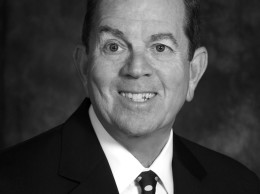Opinion: Look to the arts for the next generation of leaders
By Ritch Eich
A constant in the world of business and politics is the need for leaders who inspire, spark creativity, build trust, and innovate.
And yet, in America today, we find ourselves in a leadership drought. Practically everywhere we turn our eyes, we see failure, as establishment leaders prove themselves wholly incapable of addressing difficult moral, economic, and political issues, such as gun violence, partisanship, immigration, the high cost of college and runaway inflation.
Where do we look for our next wave of leaders? Universities, think tanks, the business world, and even the fields of battle have long been breeding grounds for leadership. But these sources suddenly seem to be coming up dry. And yet, there remains one fertile, largely untapped arena from which we can draw: the arts.
In an unexpected way, Vladimir Putin’s invasion of Ukraine has opened the world’s eyes to the power of the arts to inspire us. Ukraine’s inspirational president himself famously comes from an arts background. But thanks to the work of many other Ukrainian artists as well, the art world is now being recognized as a fruitful ground for potential leadership development.
“Battleground art” is among the oldest forms of art we know. Today, Ukrainian artists — both professional and amateur — are using a variety of art forms to elevate their people’s spirits and show national pride in the face of bombings and the daily violence of war. These artists are revitalizing people’s hope and reminding their fellow citizens of their heritage and sovereignty — while informing the rest of the world about the power of the arts to move and unite us.
Ukrainian painters, singers, sculptors, embroiderers, actors, musicians, dancers, woodcarvers, and tapestry makers are today’s heroes. At any given time in Ukraine, an impromptu concert or dance performance might break out in a crowded basement of a bombed-out high-rise, at a train station, or on the city streets. Ukrainian artists are turning spaces like hotel lobbies into studios for drawing, drama, and dancing.
Iryna Babenko is one such artist. After personally hearing Russian bombs fall, Babenko posted a series of illustrations to show the world the resilience and fighting spirit of her people. One illustration shows sunflowers (Ukraine’s national flower) growing out of skulls tagged with Russian flags. Explaining her art, Babenko told NPR, “I wanted to show that no matter how much destruction Ukrainian land will have to endure, bombs and bullets can never destroy the will, strength and spirit of the Ukrainian people.”
Another Ukrainian artist, Sana Shahmuradova, had to flee to the countryside when the war began and didn’t have her art supplies with her. She began using whatever supplies she could find—charcoal, her younger brother’s crayons, boiled beets—to create art, often depicting a woman holding a baby to her chest.
Yuliana Chi, a Ukrainian-born photographer and artist based in Los Angeles, has created a new series of vivid, avant-garde photos featuring large splashes of blue and yellow—the colors of the Ukrainian flag—as well as other imagery representing war and her native country.
Los Angeles County comprises the fourth largest constellation of Ukrainian immigrants and Ukrainian Americans in the United States. Its Ukrainian Culture Center serves as a major focal point for preserving and enhancing Ukrainian customs, arts and civic life, uniting persons of Ukrainian descent and their organizations along the coast and interior of Southern California.
In Kyiv, Ukrainian street artist Sasha Korban painted a mural showing two gloved hands sewing together a torn Ukrainian flag and posted it online, along with a passionate appeal for international support.
Painter Andriy Roik of Lviv stopped working for a while after the war broke out so he could help refugees who were fleeing to Lviv, The Guardian reported in April. When he resumed working under the din of air raid sirens, he began painting his visions of peace. Another artist from Lviv, Sergii Radkevych, began using his art to “show the whole world the violence and the aggression” of the invasion, he told The Guardian.
These artists have not shrunk from their passion in the face of war. On the contrary, they have become stronger, more vocal, more focused, and more daring in their craft. Where else in today’s world do we see such personal courage and fearless expression of ideas? Certainly not in the realms of politics, academia, and the media. Is it farfetched to suggest that the arts may indeed be the one and only remaining place where we might find leaders with the strength and vision needed to solve today’s intractable problems?
The arts have long been recognized for their power to calm people, unite people, and lift people’s spirits. But they also have the power to move people to action. Under daily threats of horrific violence, Ukrainian artists are bravely showing the world that practitioners of “the arts” may well be the new face of leadership.
• Ritch K. Eich is the former chief of public relations for Blue Shield of California and former board chairman of the Los Robles Hospital and Medical Center in Thousand Oaks. He has published five books on leadership, including his most recent, “Leading With Grit, Grace, & Gratitude.” He is a retired captain in the U.S. Naval Reserve.








